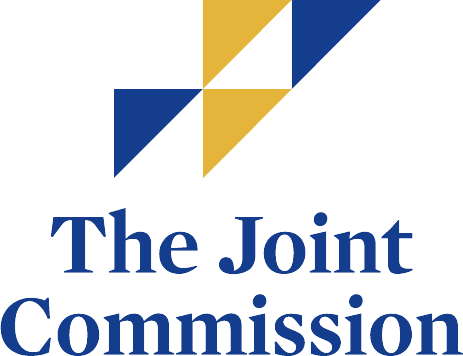When adults and young adults seek help and drug treatment, it’s usually due to these two general classes of addictive drugs: stimulants and depressants. Based on their names, we can understand what makes these two different. Essentially, depressants slow down the body parts controlled by the central nervous system, while stimulants speed up the central nervous system’s activity, including the brain.
Although most people take these prescription medications with responsibility, misuse, and recreational drug use is becoming more and more prevalent. According to the National Institute on Drug Abuse, around 18 million people misused stimulant and depressant medication at least once in 2019.
Moreover, stimulants and depressants claim lives every year, with accidental overdose being the leading cause of death of people under 50 in 2017. Long-term abuse can also lead to other health problems. That’s why it’s imperative to know the effects of each type. Being familiar with them can help with the recognition of abuse, addiction, and overdose.
The lack of proper education on these substances can quickly develop into a substance use disorder, letting the drug control one’s life. When one refuses or is unable to stop using and abusing these substances, they are likely to develop health complications early, leading to death.
Stimulants
Popularly known as “uppers,” stimulants speed up messages and activity between the brain and the body, making a person feel more energetic, awake, alert, alert, confident, and even invincible.
Effects of stimulants
Taking this kind of drug sends the central nervous system into overdrive– heart and breathing rates increase, appetite is suppressed, and blood pressure spikes. Some can even bring a rush of euphoria.
However, excessive doses of stimulants can lead to over-stimulation with adverse effects:
- nausea and vomiting;
- chills;
- irregular breathing;
- loss of consciousness;
- tightness or pain in the chest;
- stomach cramps;
- muscle twitches;
- teeth grinding;
- severe headaches;
- tremors;
- anxiety;
- panic seizures;
- aggression; and
- paranoia.
Stimulants may bring energy and euphoria to individuals, but these effects are only temporary. When the drug leaves the body, the person will “crash” and experience symptoms such as inability to focus, fatigue, and depression.
In addition to “crashing,” stimulants can negatively impact one’s health. For people with heart problems, taking them can be risky because they increase blood pressure and heart rate. Taking stimulants poses the same risk for those with an increased risk of stroke.
Stimulants also have detrimental psychological effects. Consuming this type of drug is particularly harmful to those with existing mental illnesses, like panic disorders and anxiety. The particular problem of self-medication, however, is common. According to the National Alliance on Mental Health, people with mental illness often abuse substances to cope with overwhelming symptoms.
Signs and effects of long-term abuse
Initially, stimulant users will seem energized with a positive attitude. However, as they continue to use it, they need higher doses to get that effect. They will become anxious, paranoid, depressed, and irritable. Plus, obtaining and obtaining the drug will be the top priority, making them neglect other responsibilities.
They will also go through extreme weight loss and dental problems from teeth grinding or smoking. Stimulant abuse can also cause insomnia, as the drug keeps them awake at night.
Long-term stimulant abuse can weaken the artery walls and cause heart inflammation due to high blood pressure wearing them down. Stimulant abuse can also lead to ulcers and stomach tears because of blood flow restriction to the gastrointestinal tract.
In addition to heart problems, studies suggest the continued use of stimulants, specifically, using cocaine, can permanently cause significant changes in the brain. Damage from stimulants includes reducing the white matter, which deals with stress management, impulse control, and decision-making.
If users do not go through stimulant recovery, they can develop health problems or overdose. Deaths by stimulant overdose are often a result of sudden heart failure, stroke, heart attack stroke, or hyperthermia– a condition in which the body’s temperature is abnormally and dangerously high.
Common stimulants
-
Caffeine and nicotine
Caffeine and nicotine are not illegal. Both are mild stimulants people usually consume to get through the day. However, they have adverse side effects, especially if they contain harmful additives.
-
Adderall and Ritalin
Adderall and Ritalin are also legal. They are stimulant medications used to treat attention deficit hyperactivity disorder. Unfortunately, an increasing number of people are abusing it without a prescription.
-
Cocaine, methamphetamine, and ecstasy
Although they carry some legitimate medical uses, cocaine, meth, and ecstasy are drugs people commonly get addicted to, and are considered “street” drugs. Crystal meth, in particular, can cause skin sores, muscle spasms, and problems with thinking and memory.
When users go through withdrawal, they will experience specific crystal meth detox symptoms. Physically, they will feel exhausted, have headaches, dry mouth, and not want to eat. Alternatively, mental and emotional symptoms include paranoia, anxiety, depression, and intense cravings for meth.
Depressants
As opposed to stimulants, depressants or “downers” hamper the central nervous system. They slow down the heart rate, respiratory system, and gastrointestinal system, making the person feel relaxed, peaceful, and even sleepy. Like stimulants, depressants can also produce a sense of euphoria.
Effects of depressants
Because depressants are often taken with another to amplify euphoria’s effects, they become dangerous with the possibility of an overdose. The central nervous system controls the vital functions of the lungs and heart. So, artificially slowing it down comes with risks.
Overdosing on depressants will slow down one’s breathing to the point that oxygen is insufficient to reach vital organs like the brain. When this happens, the person can experience brain damage, coma, and even death.
Symptoms of overdose include:
- Floppy limbs;
- Shallow breathing;
- Clammy or cold skin;
- Bluish fingertips or lips; and
- Unconsiousness;
Signs and effects of long-term abuse
Evidence of long-term depressant use can usually be seen in the liver and digestive system. Specifically, heavy and long-term alcohol abuse can significantly damage the liver with conditions like alcoholic hepatitis, fatty liver, and liver failure.
Brain damage is also apparent in people who have been abusing alcohol for years. Furthermore, this substance is linked to several types of cancer, increasing the risk of developing them. Studies show that around 3.2% to 3.7% of all cancer-related deaths in the US were due to alcohol consumption.
Another problem with continued depressant abuse is that it can cause chronic constipation. Chronic constipation occurs because this type of drug makes the whole system move unnaturally slowly. The same goes for the respiratory system. Compromising puts individuals at a higher risk of respiratory infections.
Some psychological effects are caused by depressants, such as depression, anxiety, and panic attacks. Some people even develop chronic fatigue syndrome and can experience them even after they get clean. Common also are sexual dysfunction and insomnia.
Common depressants that are abused:
-
Alcohol
Alcohol is not illegal. It is easily accessible, making it one of the most consumed and addictive.
-
Opioid painkillers
Opioid painkillers include OxyContin, Vicodin, heroin, codeine, morphine, and fentanyl. They are addictive because abusing opioids can give a sense of intense euphoria. Around 2.5 million Americans are addicted to one of these painkillers.
Heroin is very similar to morphine. When it enters the brain, it essentially turns into morphine. However, heroin is more potent and is often taken with other substances because it is highly illegal.
-
Barbiturates
Common barbiturates include amobarbital and phenobarbital. For decades, barbiturates were prescribed to relieve stress and anxiety. It was later found that these were highly addictive and present a high risk of overdose.
-
Benzodiazepines
Benzodiazepines were developed after barbiturates were found unsuitable medications. Although they are a safer solution to stress and anxiety disorders, they are still addictive and dangerous. Valium and Xanax are considered benzodiazepines.
If you are or know someone struggling with drug abuse and looking for drug treatment centers in Arizona, turn to Buena Vista Health and Recover Center. You can visit us in Cave Creek, Arizona, or contact us at (800) 922-0095.
Disclaimer: This post serves a strictly educational use. It does not reflect the services, products, or therapeutic approaches of this establishment or its healthcare practitioners. This blog aims not to advertise the products, services, or therapeutic approaches of any other establishment that may be associated with this site. On the subject of safe or legal services, products, and appropriate therapies, recommendations ought to be given by a qualified professional on a case to case basis




